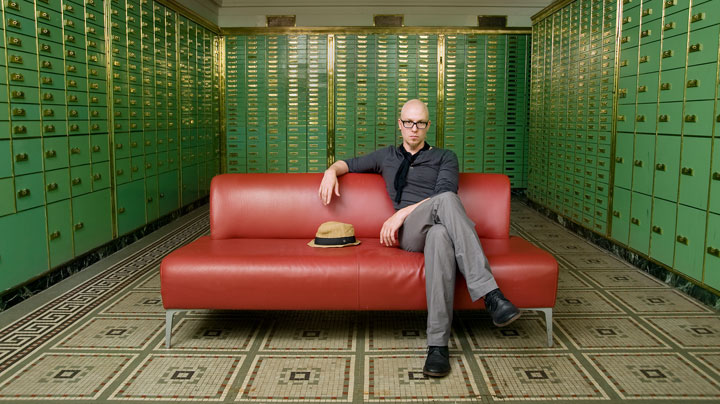Marco von Orelli (Trompete, Komposition)
Benjamin Weidekamp (Saxophon)
Kaspar von Grünigen (Kontrabass)
Samuel Dühsler (Schlagzeug)
Das Marco von Orelli Quartett spielt zeitgenössische Musik in der Nähe von Jazz, Neuer E-Musik und in den Arten der freien Improvisation.
Die Kompositionen und konzeptuellen Vorgaben stammen zu einem guten Teil vom Leader und Trompeter Marco von Orelli.
Seine Kompositionen und Konzepte dienen als Ausgangspunkte, Überleitungs- und Zwischenstationen für unvorhersehbare musikalische Ereignisse und Wendungen.
Der reichhaltige Klangkörper des Quartetts funktioniert sowohl als kollektiver Organismus, als auch als flexibles Vehikel, um Freiräume für die einzelnen Musiker zu schaffen.
Pressestimmen:
„Der junge Trompeter und Komponist Marco von Orelli stammt aus Basel. Studiert hat er in Winterthur, Zürich und in seiner Heimatstadt. Stilistisch bewegt er sich zwischen Jazz, Neuer Musik und freier Improvisation. Das Erbe von Duke Ellington und Charles Mingus ist ihm so präsent wie Schönbergs Zwölftonmusik. In verschiedenen Formationen hat er bereits sein Talent bewiesen: in der Big Band von George Gruntz etwa, aber auch in Tommy Meiers «Root Down». Nun legt er beim renommierten Avantgarde-Label Hat Hut sein Debütalbum als Leader vor. Es ist weit mehr als eine Talentprobe. Die acht Kompositionen faszinieren durch Eigensinn und Ideenreichtum. Sie spielen auf Sebastian Brants «Narrenschiff» (1494) an, dem mit Mitteln der Zweiten Wiener Schule zu Leibe gerückt wird, aber auch auf Man Ray; sie bringen Sizilien und die unterirdische Welt moderner Metropolen zum Klingen. Marco von Orellis Musik ist nicht eingängig, aber nahrhaft. Sie lebt von der Spannung zwischen so knappen wie komplexen, ausgeschriebenen Themen und freier Improvisation. Um solistisches Schaulaufen geht es nicht, wohl aber um subtile Klangfarben-Kombinationen. Dafür sorgen neben dem Leader Lukas Briggen (Posaune) Lukas Roos (Bassklarinette), Michael Wintsch (Piano, Synthesizer), Kaspar von Grünigen (Bass) und Samuel Dühsler (Schlagzeug).“
(pap.) NZZ am Sonntag, 20. Mai 2012
„Swiss trumpeter and composer Marco von Orelli is equally at home in both traditional and „out“ settings. Close Ties on Hidden Lanes, a recording of his sextet for Hat Hut, is a snapshot of a band versatile enough to encompass both ends of the jazz spectrum – as well as a healthy dose of contemporary classical reference points – Messiaen, Ives, Scelsi, etc. – to boot. The recording consists of eight originals by von Orelli , which are fleshed out with arranging help from band member and pianist/synth player Michel Wintsch, a performer who isn’t averse to adding electronic rocket fire periodically to the proceedings (listen to the varied and extended cut „Marsala’s Strandgut“ for examples). These two are joined by trombonist Lukas Briggen, bass clarinetist Lukas Roos, bassist Kaspar von Grünigen, and drummer Samuel Dühsler.
Make no mistake however, even when the group is moving towards post-tonal terrain, they seldom lose track of strong sense of pulsation. On „Urban Ways,“ wah-wah trumpets and long drawn out pitch bends are undergirded by a post-bop groove. The rhythm section eventually coalesces in a series of pounding repeated dissonant verticals that recall Stravinsky doing the „Rite thing.“ Even in the more free play environment of „Poetry,“ in which talking muted brass overtake the rhythm section for an extended period, there is still a sense of urgency and forward drive in the solos. When drums, bass, and keys forcefully reenter, one doesn’t feel as if gears shift, but that the underlying groove has been maintained during their relative absence.
A particularly fetching tune which shows off all of the players, as well as von Orelli’s composing chops and imaginative sense of form, is „Narragonia,“ a fifteen minute long opus that forms the album’s centerpiece. It embraces long lyrical neo noir solo trumpet and trombone duets, chorale-like tutti passages, and impressively well controlled upper register interjections from Roos. A bracing middle section filled with chromatic coruscation from the piano and terse angular blatting responses from the winds gives way to some avant mayhem from Roos in an extended howling cadenza. Wintsch, von Orelli, and Briggen follow suit, each soloing in equally questing fashion.After the inevitable explosive tutti, we are shifted into a more mysterious soundscape, filled with repeated note filigrees, whole tone piano riffs, and low register glissandi. Another cadenza, this time from trombone, is accompanied by synth, a bit of prepared piano, and alternately shimmering and terse percussion textures. Gradually, von Orelli and Roos reassert themselves, and the opening chorale, deconstructed, lined out, and elaborately ornamented, brings us full circle. The interwoven chromatic lines from the piano and brass interjections reintroduce an even more ecstatic version of the opening chorale, which brings the composition to a tense and dissonant conclusion. Close Ties on Hidden Lanes brings together notation and improvisation, freedom and structure, chamber music and jazz in an amalgamation that suggests vibrant ways forward on each of these musical thoroughfares.“
by Christian Carey, Sequenza 21
